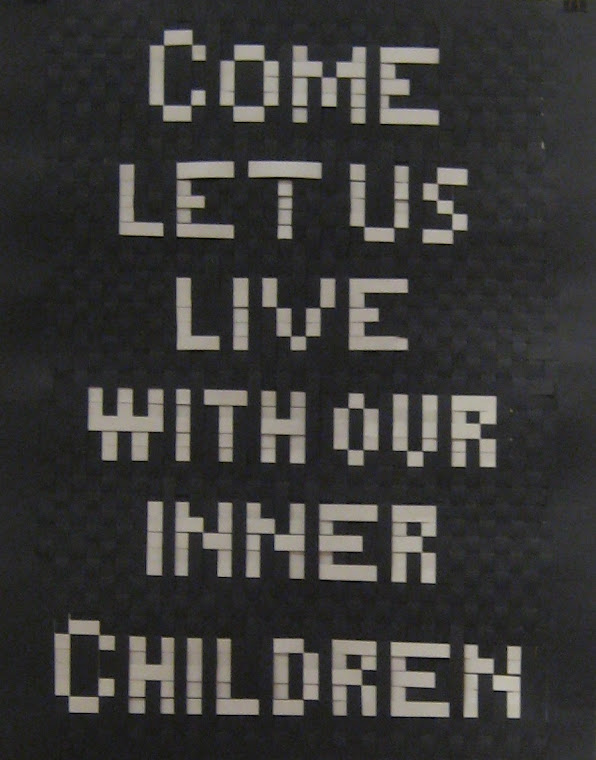Friday, November 19, 2010
GIFT #1
Froebel’s Gift 1 consists of 6 soft yarn balls, approximately 2” in diameter. The balls are red, orange, yellow, green, blue and purple. They have a string, approximately 6” long) with a loop on one end so they can be dangled. For me, I wanted to continue using primary colors and instead of yarn balls, I made knots in the yarn, which still closely resemble the idea of a ball, but with my own twist. And for me, as a photographer, I also wanted to find an interesting way of photographing my gift and how I saw it being illustrated.
- Adena
GIFT #2
Gift #2. This "stress relief" drawing was completed during the time of our initial exploration of Mr. Froebel's gifts. As an afterthought it reflects a management of the multifaceted gift collection, which would later be paired down to a few symbolic monuments. The narrative of the drawing is a figure's submersion in physical objects as information, and an identification of the fluidity and immateriality of simple, blockish forms.
- Casey
GIFT #3
Froebel's 3rd gift, blocks, is the simple yet elegant first in a series of lessons using blocks. This gift presents a larger cube made from a symmetrical stack of 8 smaller wooden cube blocks. With these 8 cube blocks a child is supposed to gain an understanding of part and whole and fractions, and also explore symmetric patterns. As I pondered this gift, I thought a lot about how to further convey a part of a whole. I also thought about asymmetrical patterns that I am more drawn to as an adult and about early childhood drawings. I felt that if this set of 8 blocks had one colored one, then that might focus a child in on the part of the whole concept and perhaps he could use this block to influence form of compositions created with the blocks. After making one set of the colored blocks I considered how a change in color would possibly affect a change in composition. So I created 3 more. Here is my Gift 3, "Eighth Chromes."
- Rebecca
GIFT #4
This is a sound piece I constructed similarly to the graph paper drawings. It uses cubic repetition and gradual morphing motion to evoke the feeling of tumbling blocks. Some of the frequencies and timbres I associate with the scorching color of the drawings in a Froebel "slot machine."
-Casey
GIFT #5
The 5th gift is a set of 27 3 inch blocks, some of these are halved. The goal of the set is to enable the child to figure out a triangle can be made from the sides of three squares, it is an example of the Pythagorean Theorem. I attempted to prove the Theorem using household items instead of blocks. I had an alarm clock, an Internet Router, and a Nintendo Wii Video Game System. Though these three things do not have the same dimensions on each side they still have right angles and are able to make a triangle.
- Catharine
GIFT #6
Froebel’s Gift 6 divides the 3-inch cube into 18 oblong blocks: 12 flat square blocks (caps) and 6 narrow columns. With more of an architectural feel to this gift, I found myself a set of blocks similar to the blocks in the gift and created my own architectural structures.
- Adena
GIFT #7
The 7th gift of parquetry is the bridge between the preceding 3 dimensional gifts and the following 2 dimensional gifts. After thorough experimentation with the prior tangible forms students would be presented with flat geometric tiles to continue exploring ideas of parts to whole and the interconnectedness of all things. My personal exploration of parquetry actually began with paper folding (gift 18) which led to dividing colored squares of construction paper into smaller shapes. After arranging and rearranging these shapes into abstract designs and simple representations they began to have a life all their own. Stop motion animation seemed like the perfect way to show the inherent liveliness present in this gift.
-Liz
Subscribe to:
Posts (Atom)






